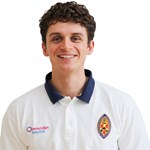Physiotherapy as a private patient
If you’re self-funding your treatment, you can refer yourself directly with no need for a letter from your GP. Book an appointment with our Physiotherapists in Kent at a time to suit you by calling our Private Patient Team on 01580 363158 or by completing our online booking form.
If you’re using your private medical insurance, please follow their guidelines and contact our Private Patient Team on 01580 363158.
Physiotherapy as a Benenden Health Member
If you’re a member of Benenden Health, you can access physiotherapy treatment directly by contacting Member Services on 0300 304 5700.
You'll be given an appointment for a telephone consultation with Vita Health to assess your needs. At this stage, you may be provided with guided self-management or face-to-face physiotherapy. If in-person treatment is recommended, a member of our Patient Administration team will contact you to arrange an appointment with a Physiotherapist.
Membership also entitles you to access Vita Health's virtual classes, which include strength and balance sessions as well as chair-based exercises.











